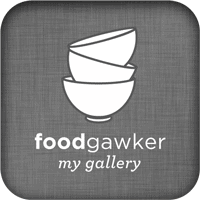Menu
This roasted butternut squash is a simple, delicious, and versatile side dish. Try it with fried eggs for breakfast!
I never used to be a big winter squash fan, to me it always tasted too… well squashy, or it was drowned in brown sugar. Since going grain free, I have explored many new foods, and I have tried old foods in new ways. One of my favorite discoveries is diced and roasted butternut squash.
This crispy side dish is a great replacement for roasted white potatoes. I also like it for breakfast. For a while I had stopped eating my eggs fried because the idea of fried eggs without toast to sop up the yolks was just sad. Fortunately, I discovered that roasted butternut is a great stand in for toast, try it, it’s yummy!
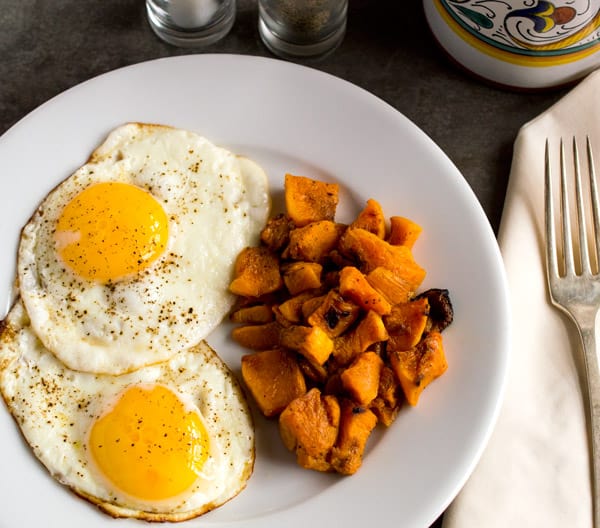
This is not so much a recipe as it is a cooking method. You can roast the squash in lots of different fats: butter, ghee, olive oil, and coconut oil… You can also season it with many different spice and herb combinations. Sometimes I just use salt and pepper; sometimes I add sage or rosemary. I have provided my favorite combination of cinnamon and cayenne with a touch of maple syrup, but you can play around with your own version. You can leave out the maple syrup if you are watching your carbs, but I like the way it caramelizes and makes the squash crispy.
If you are not familiar with butternut squash, here are some tips on preparing it:
I have sensitive skin so I like to wear rubber gloves when handling it. The peeled raw flesh of butternut squash (and many winter squashes) will “eat” the skin on your fingers. It’s a self defense mechanism that heals the plant’s skin when its flesh is pierced, and it also deters animals from having a little munch. Don’t worry, once the squash is cooked, the “skin-eating” is no longer a concern.
Remove the skin with a vegetable peeler.
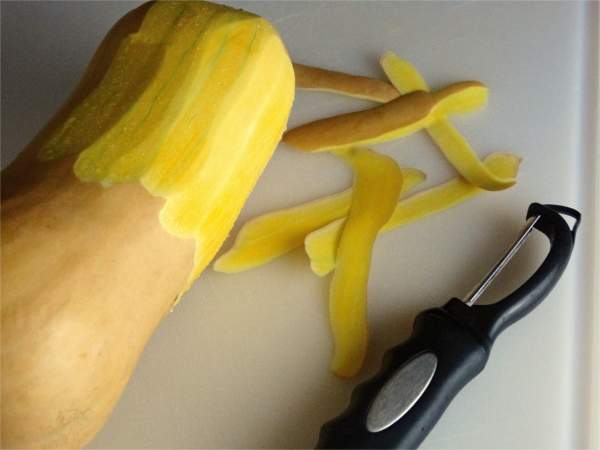
I like to cut the round bottom off, and then I cut it in half to get to the seeds. Just scrape the seeds and fibers out with a spoon.
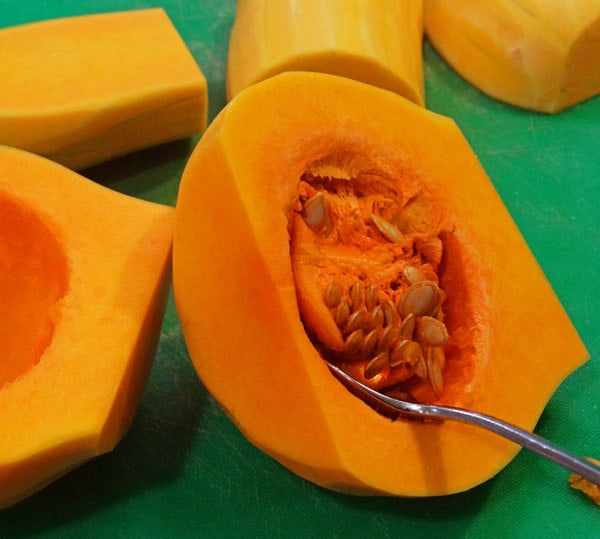
Next chop the squash into bite-size pieces.

Spread the chopped squash evenly onto two rimmed baking sheets. Add two tablespoons of your favorite fat, season and toss to coat. Sometimes I use a sieve to evenly disperse my combined spices.
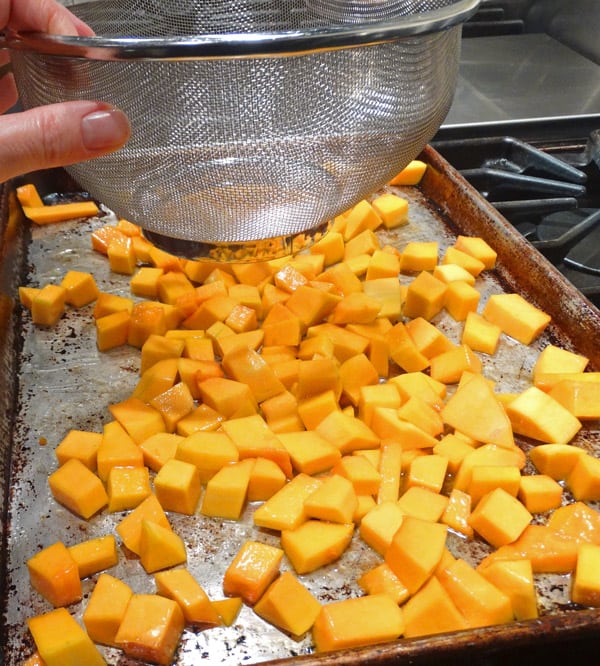
Roast at 400 degrees for 25-35 minutes stirring and tossing every 10 minutes. The squash is done cooking when it starts to become crispy and dark in places. My husband likes it extra crispy and almost burned, he calls it “squash fries”.
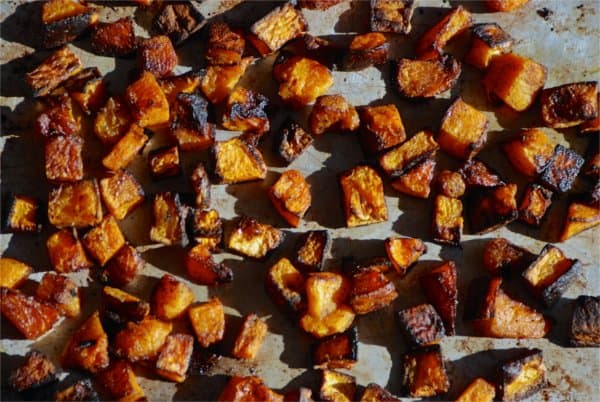
To see more recipes, CLICK HERE.

I love adding a whole, unprocessed and healthy twist to classic recipes. My food is often grain-free, usually gluten-free, and always unprocessed.
